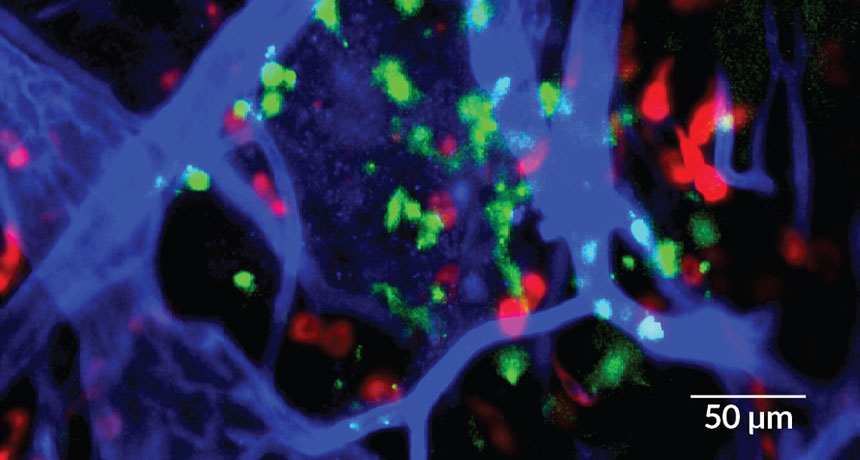
OUT OF REACH Allergens travel in the bloodstream, but the mast cells (red) that trigger anaphylaxis are located outside of blood vessels (blue). Intermediary cells (green) reach in to probe the blood, then relay messages about allergens to mast cells.
H.W. Choi et al/Science 2018